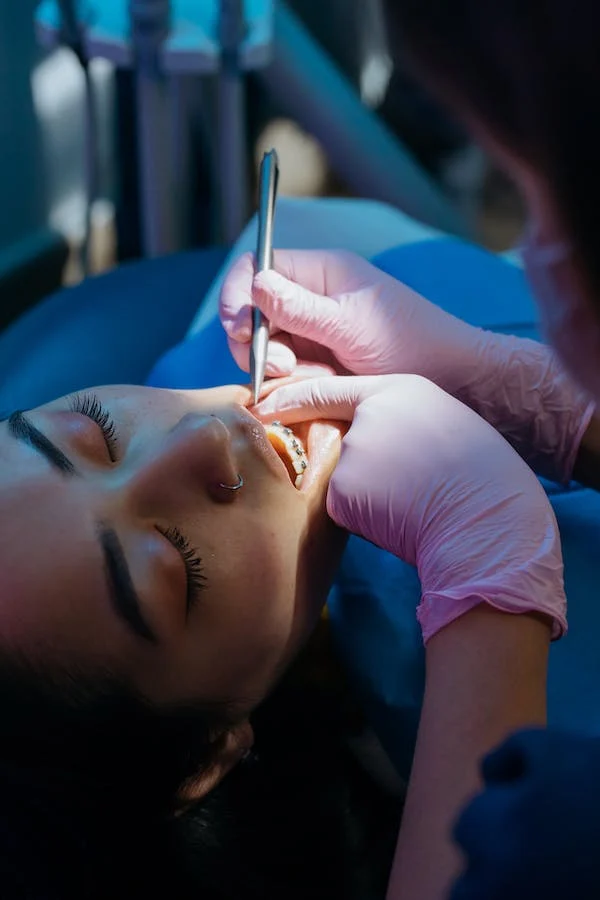Legacy Orthodontics Things To Know Before You Get This
Legacy Orthodontics Things To Know Before You Get This
Blog Article
The 7-Second Trick For Legacy Orthodontics
Table of ContentsThe 45-Second Trick For Legacy Orthodontics7 Easy Facts About Legacy Orthodontics ShownHow Legacy Orthodontics can Save You Time, Stress, and Money.The Ultimate Guide To Legacy OrthodonticsThings about Legacy Orthodontics
In enhancement, we use adjustable therapy schedules, versatile payment choices and an enjoyable, enjoyable experience.An orthodontist is a dentist educated to identify, prevent, and deal with teeth and jaw irregularities. Orthodontists work with people of all ages, from youngsters to grownups.
Malocclusion, or misaligned teeth, can result in oral issues, consisting of tooth degeneration, periodontal condition, and challenging or painful eating. Not everyone is birthed with straight teeth. If you have a poor bite or large spaces in between your teeth, you may wish to get in touch with a dentist specializing in orthodontic treatment.
Some Ideas on Legacy Orthodontics You Should Know
( Picture Credit Scores: DigitalVision/Getty Images) Orthodontists make use of dealt with and removable dental gadgets, like dental braces, retainers, and bands, to change the setting of teeth in your mouth. Orthodontic treatment is for dental abnormalities, consisting of: Uneven teethBite issues, like an overbite or an underbiteCrowded teeth or teeth that are also far apartJaw misalignmentThe objective of orthodontic therapy is to enhance your bite.
While you may think of orthodontists as mostly for kids or teenagers that require braces, they can fix dental issues at any type of age. Orthodontists attend college, dental institution, and orthodontic school.
All orthodontists are dental experts, but not all dental professionals are orthodontists. Orthodontic residency programs offer intensive, focused guideline for dental specialists. They concentrate on 2 areas: How to properly and safely relocate teeth Just how to appropriately assist development in the teeth, jaw, and faceOnce an orthodontist has finished training, they have the option to end up being board licensed.
Fascination About Legacy Orthodontics
Misalignment, or malocclusion, is the most usual reason people see an orthodontist. It is genetic and is the result of size differences in between the top and lower jaw or between the jaw and teeth. Malocclusion brings about tooth overcrowding, a twisted jaw, or irregular bite patterns. Malocclusion is generally treated with: Your orthodontist connects metal, ceramic, or plastic square bonds to your teeth.
Some people require a headgear to help move teeth right into line with stress from outside the mouth. A retainer is a customized gadget that keeps your teeth in location.
They're usually used on children. They can create additional space in the mouth without having to pull teeth. If you have a serious underbite or overbite, you could require orthognathic surgical treatment (likewise called orthodontic surgical procedure) to lengthen or reduce your jaw. Orthodontists make use of wires, medical screws, or plates to sustain your jaw bone.
You might require to see an orthodontist if you have: Crowding or otherwise sufficient area for every one of your teethOverbite, when your upper teeth come your base teethUnderbite, when your bottom teeth are as well far forwardSpacing or issues with gapsCrossbite, which is when your upper teeth fit behind your bottom teeth when your mouth is closedOpen bite or a vertical void in between your front bottom and top teethMisplaced midline, when the center of your base and upper teeth do not align Remedying an oral malocclusion can: Make biting, chewing, and talking easierImprove the balance of our face and your overall appearanceEase discomfort from temporomandibular joint disordersSeparate your teeth and make them much easier to cleanse, aiding avoid dental cavity or tooth cavities It's frequently a dental practitioner who first notifications misaligned teeth throughout a regular examination.
The 45-Second Trick For Legacy Orthodontics

During your first orthodontic examination, you'll likely have: A dental examPhotos taken of your face and smileDental X-raysPanoramic (360 level) X-rays of your face and headImpressions to produce mold and mildews of your teethThese tests will assist your orthodontist know just how to wage your therapy. orthodontist. An orthodontist is a dental expert that's had training to treat your teeth and jaw
Orthodontists might carry out surgical procedure, exams,X-rays,and more to help you acquire an extra comfortable, healthier smile. An orthodontist is concentrated on your bite, so something like a damaged tooth would certainly be dealt with by a dental practitioner. Orthodontists are dental experts yet not all dental experts are orthodontists. Orthodontists are focused on your bite, or the method your teeth fit together, and the straightness of your teeth.
Ever questioned how celebs always seem to have completely lined up teeth? The response usually exists in the knowledgeable hands of an orthodontist. However what specifically does an orthodontist do? Orthodontists are oral experts that concentrate on remedying irregularities in the teeth and jaws. Their knowledge goes past just producing a beautiful smile; it encompasses boosting your total dental health and wellness and feature.
The Only Guide for Legacy Orthodontics

, orthodontists have a varied toolkit at their disposal. These tried-and-true dental braces make use of a system of braces bonded to the teeth and connected by cords.
These removable additional info trays are personalized to considerably shift the teeth's position. In situations of narrow jaws, palatal expanders can be utilized to create area for appropriate tooth positioning.
Report this page